目录
下面将通过代码实例来详细解释基于ViT实现ImageNet分类任务。
如果你对MindSpore感兴趣,可以关注昇思MindSpore社区
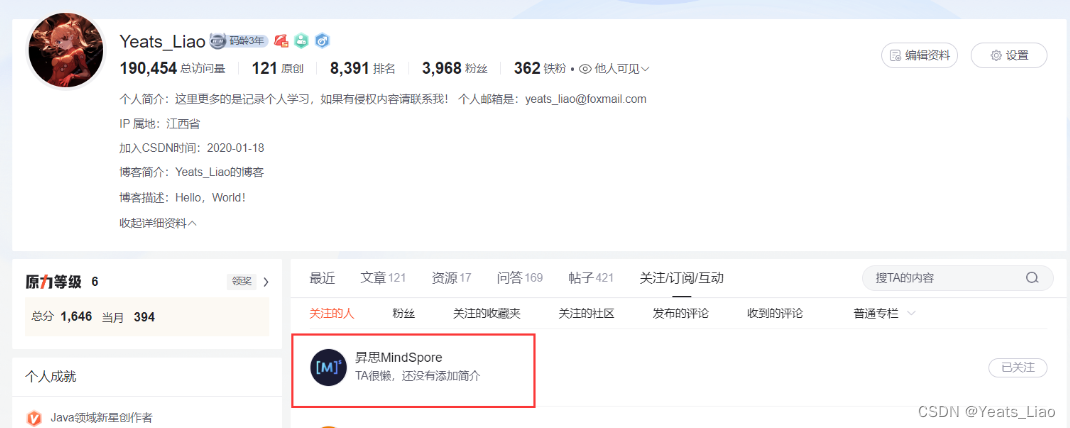
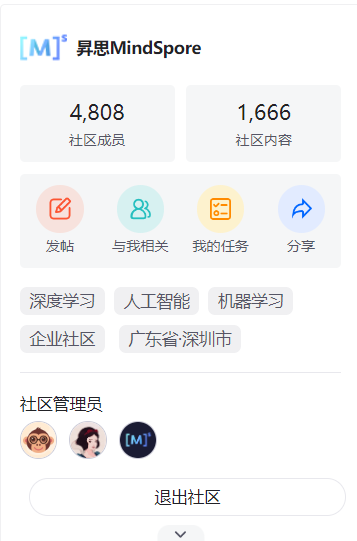
一、环境准备
1.进入ModelArts官网
云平台帮助用户快速创建和部署模型,管理全周期AI工作流,选择下面的云平台以开始使用昇思MindSpore,获取安装命令,安装MindSpore2.0.0-alpha版本,可以在昇思教程中进入ModelArts官网

选择下方CodeLab立即体验

等待环境搭建完成
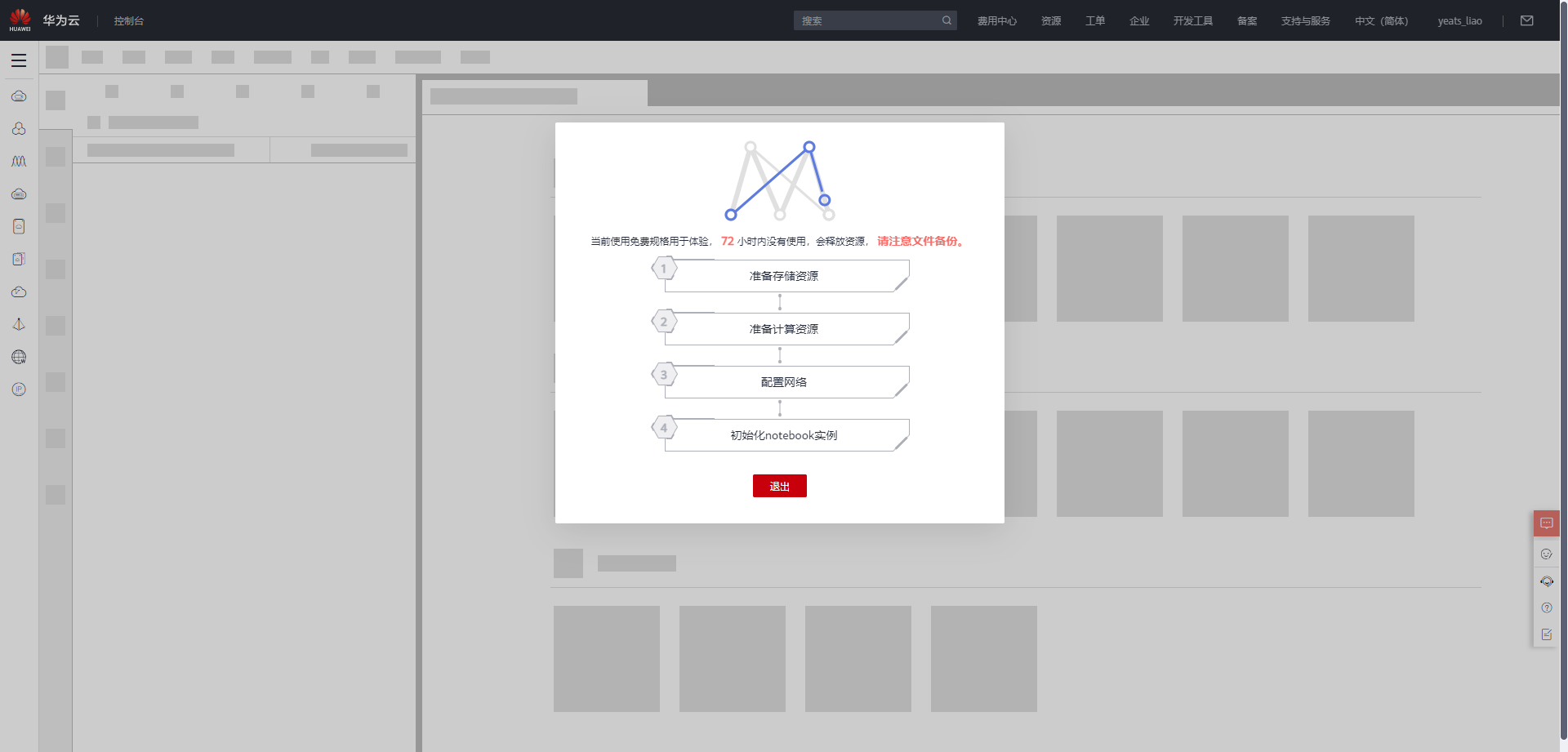
2.使用CodeLab体验Notebook实例
下载NoteBook样例代码,Vision Transformer图像分类 ,.ipynb为样例代码

选择ModelArts Upload Files上传.ipynb文件
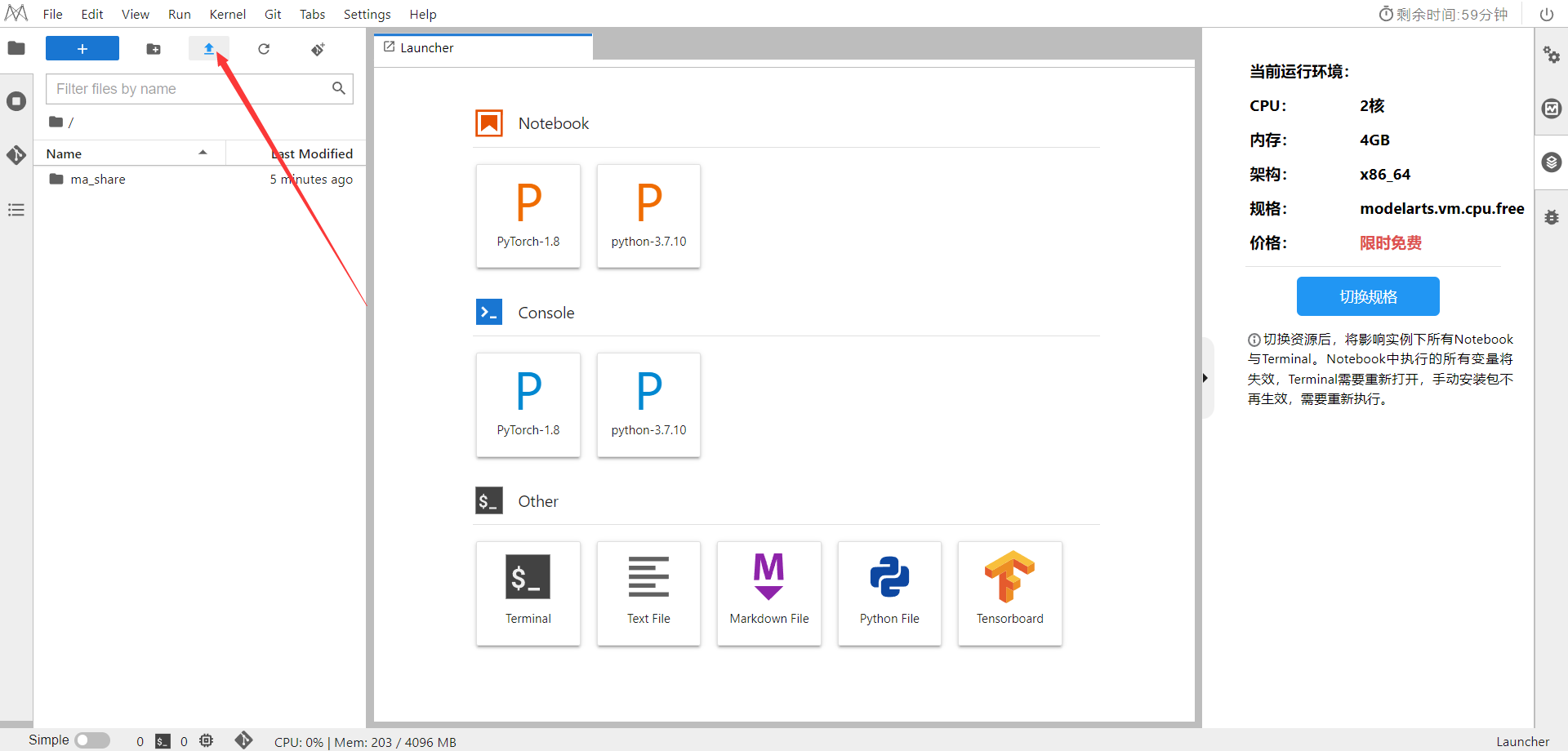


选择Kernel环境

切换至GPU环境,切换成第一个限时免费
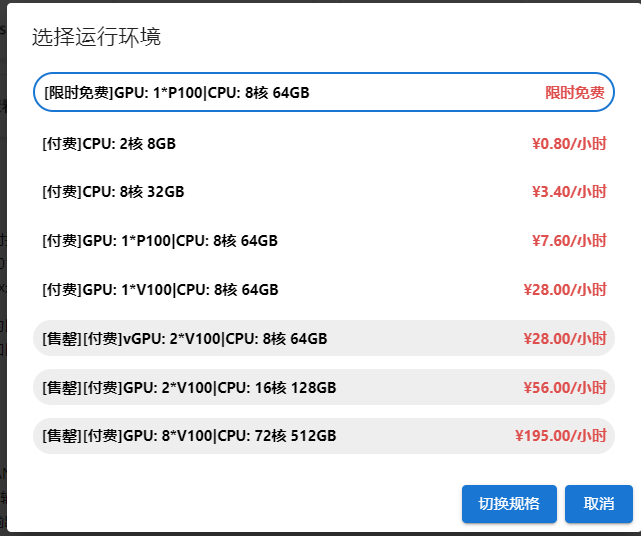
进入昇思MindSpore官网,点击上方的安装

获取安装命令

回到Notebook中,在第一块代码前加入命令

conda update -n base -c defaults conda
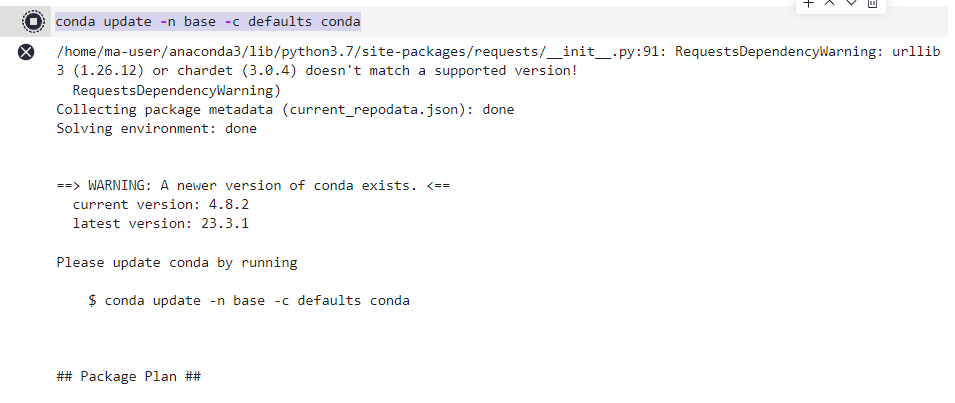
安装MindSpore 2.0 GPU版本
conda install mindspore=2.0.0a0 -c mindspore -c conda-forge

安装mindvision
pip install mindvision
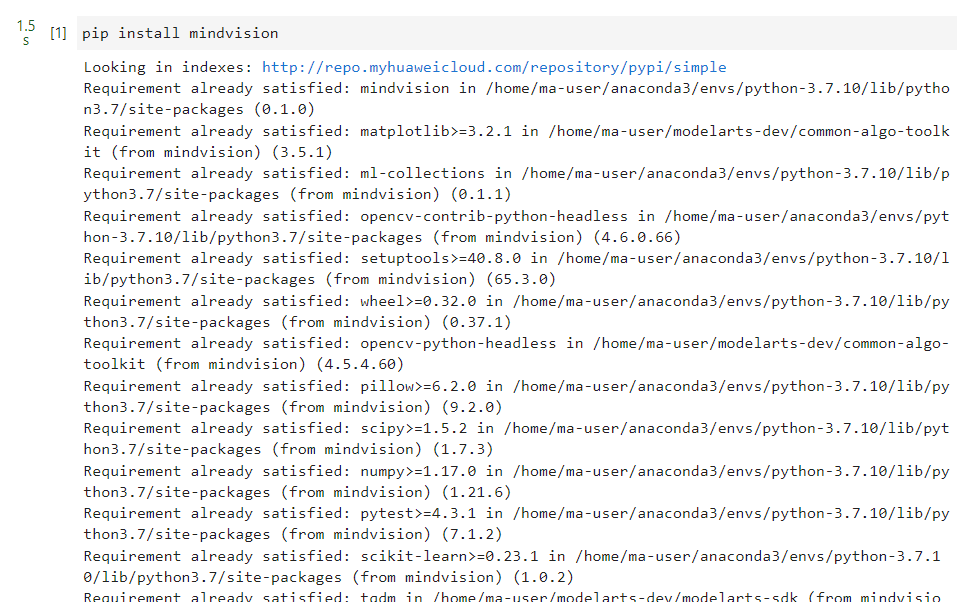
安装下载download
pip install download

二、环境准备与数据读取
.dataset/
├── ILSVRC2012_devkit_t12.tar.gz
├── train/
├── infer/
└── val/

from download import download
dataset_url = "https://mindspore-website.obs.cn-north-4.myhuaweicloud.com/notebook/datasets/vit_imagenet_dataset.zip"
path = "./"
path = download(dataset_url, path, kind="zip", replace=True)

import os
import mindspore as ms
from mindspore.dataset import ImageFolderDataset
import mindspore.dataset.vision as transforms
data_path = './dataset/'
mean = [0.485 * 255, 0.456 * 255, 0.406 * 255]
std = [0.229 * 255, 0.224 * 255, 0.225 * 255]
dataset_train = ImageFolderDataset(os.path.join(data_path, "train"), shuffle=True)
trans_train = [
transforms.RandomCropDecodeResize(size=224,
scale=(0.08, 1.0),
ratio=(0.75, 1.333)),
transforms.RandomHorizontalFlip(prob=0.5),
transforms.Normalize(mean=mean, std=std),
transforms.HWC2CHW()
]
dataset_train = dataset_train.map(operations=trans_train, input_columns=["image"])
dataset_train = dataset_train.batch(batch_size=16, drop_remainder=True)

三、模型解析
下面将通过代码来细致剖析ViT模型的内部结构。
Transformer基本原理
Attention模块
from mindspore import nn, ops
class Attention(nn.Cell):
def __init__(self,
dim: int,
num_heads: int = 8,
keep_prob: float = 1.0,
attention_keep_prob: float = 1.0):
super(Attention, self).__init__()
self.num_heads = num_heads
head_dim = dim // num_heads
self.scale = ms.Tensor(head_dim ** -0.5)
self.qkv = nn.Dense(dim, dim * 3)
self.attn_drop = nn.Dropout(p=1.0-attention_keep_prob)
self.out = nn.Dense(dim, dim)
self.out_drop = nn.Dropout(p=1.0-keep_prob)
self.attn_matmul_v = ops.BatchMatMul()
self.q_matmul_k = ops.BatchMatMul(transpose_b=True)
self.softmax = nn.Softmax(axis=-1)
def construct(self, x):
"""Attention construct."""
b, n, c = x.shape
qkv = self.qkv(x)
qkv = ops.reshape(qkv, (b, n, 3, self.num_heads, c // self.num_heads))
qkv = ops.transpose(qkv, (2, 0, 3, 1, 4))
q, k, v = ops.unstack(qkv, axis=0)
attn = self.q_matmul_k(q, k)
attn = ops.mul(attn, self.scale)
attn = self.softmax(attn)
attn = self.attn_drop(attn)
out = self.attn_matmul_v(attn, v)
out = ops.transpose(out, (0, 2, 1, 3))
out = ops.reshape(out, (b, n, c))
out = self.out(out)
out = self.out_drop(out)
return out

Transformer Encoder
from typing import Optional, Dict
class FeedForward(nn.Cell):
def __init__(self,
in_features: int,
hidden_features: Optional[int] = None,
out_features: Optional[int] = None,
activation: nn.Cell = nn.GELU,
keep_prob: float = 1.0):
super(FeedForward, self).__init__()
out_features = out_features or in_features
hidden_features = hidden_features or in_features
self.dense1 = nn.Dense(in_features, hidden_features)
self.activation = activation()
self.dense2 = nn.Dense(hidden_features, out_features)
self.dropout = nn.Dropout(p=1.0-keep_prob)
def construct(self, x):
"""Feed Forward construct."""
x = self.dense1(x)
x = self.activation(x)
x = self.dropout(x)
x = self.dense2(x)
x = self.dropout(x)
return x
class ResidualCell(nn.Cell):
def __init__(self, cell):
super(ResidualCell, self).__init__()
self.cell = cell
def construct(self, x):
"""ResidualCell construct."""
return self.cell(x) + x

class TransformerEncoder(nn.Cell):
def __init__(self,
dim: int,
num_layers: int,
num_heads: int,
mlp_dim: int,
keep_prob: float = 1.,
attention_keep_prob: float = 1.0,
drop_path_keep_prob: float = 1.0,
activation: nn.Cell = nn.GELU,
norm: nn.Cell = nn.LayerNorm):
super(TransformerEncoder, self).__init__()
layers = []
for _ in range(num_layers):
normalization1 = norm((dim,))
normalization2 = norm((dim,))
attention = Attention(dim=dim,
num_heads=num_heads,
keep_prob=keep_prob,
attention_keep_prob=attention_keep_prob)
feedforward = FeedForward(in_features=dim,
hidden_features=mlp_dim,
activation=activation,
keep_prob=keep_prob)
layers.append(
nn.SequentialCell([
ResidualCell(nn.SequentialCell([normalization1, attention])),
ResidualCell(nn.SequentialCell([normalization2, feedforward]))
])
)
self.layers = nn.SequentialCell(layers)
def construct(self, x):
"""Transformer construct."""
return self.layers(x)

ViT模型的输入
class PatchEmbedding(nn.Cell):
MIN_NUM_PATCHES = 4
def __init__(self,
image_size: int = 224,
patch_size: int = 16,
embed_dim: int = 768,
input_channels: int = 3):
super(PatchEmbedding, self).__init__()
self.image_size = image_size
self.patch_size = patch_size
self.num_patches = (image_size // patch_size) ** 2
self.conv = nn.Conv2d(input_channels, embed_dim, kernel_size=patch_size, stride=patch_size, has_bias=True)
def construct(self, x):
"""Path Embedding construct."""
x = self.conv(x)
b, c, h, w = x.shape
x = ops.reshape(x, (b, c, h * w))
x = ops.transpose(x, (0, 2, 1))
return x

整体构建ViT
以下代码构建了一个完整的ViT模型。
from mindspore.common.initializer import Normal
from mindspore.common.initializer import initializer
from mindspore import Parameter
def init(init_type, shape, dtype, name, requires_grad):
"""Init."""
initial = initializer(init_type, shape, dtype).init_data()
return Parameter(initial, name=name, requires_grad=requires_grad)
class ViT(nn.Cell):
def __init__(self,
image_size: int = 224,
input_channels: int = 3,
patch_size: int = 16,
embed_dim: int = 768,
num_layers: int = 12,
num_heads: int = 12,
mlp_dim: int = 3072,
keep_prob: float = 1.0,
attention_keep_prob: float = 1.0,
drop_path_keep_prob: float = 1.0,
activation: nn.Cell = nn.GELU,
norm: Optional[nn.Cell] = nn.LayerNorm,
pool: str = 'cls') -> None:
super(ViT, self).__init__()
self.patch_embedding = PatchEmbedding(image_size=image_size,
patch_size=patch_size,
embed_dim=embed_dim,
input_channels=input_channels)
num_patches = self.patch_embedding.num_patches
self.cls_token = init(init_type=Normal(sigma=1.0),
shape=(1, 1, embed_dim),
dtype=ms.float32,
name='cls',
requires_grad=True)
self.pos_embedding = init(init_type=Normal(sigma=1.0),
shape=(1, num_patches + 1, embed_dim),
dtype=ms.float32,
name='pos_embedding',
requires_grad=True)
self.pool = pool
self.pos_dropout = nn.Dropout(p=1.0-keep_prob)
self.norm = norm((embed_dim,))
self.transformer = TransformerEncoder(dim=embed_dim,
num_layers=num_layers,
num_heads=num_heads,
mlp_dim=mlp_dim,
keep_prob=keep_prob,
attention_keep_prob=attention_keep_prob,
drop_path_keep_prob=drop_path_keep_prob,
activation=activation,
norm=norm)
self.dropout = nn.Dropout(p=1.0-keep_prob)
self.dense = nn.Dense(embed_dim, num_classes)
def construct(self, x):
"""ViT construct."""
x = self.patch_embedding(x)
cls_tokens = ops.tile(self.cls_token.astype(x.dtype), (x.shape[0], 1, 1))
x = ops.concat((cls_tokens, x), axis=1)
x += self.pos_embedding
x = self.pos_dropout(x)
x = self.transformer(x)
x = self.norm(x)
x = x[:, 0]
if self.training:
x = self.dropout(x)
x = self.dense(x)
return x

整体流程图如下所示:

四、模型训练与推理
模型训练
from mindspore.nn import LossBase
from mindspore.train import LossMonitor, TimeMonitor, CheckpointConfig, ModelCheckpoint
from mindspore import train
# define super parameter
epoch_size = 10
momentum = 0.9
num_classes = 1000
resize = 224
step_size = dataset_train.get_dataset_size()
# construct model
network = ViT()
# load ckpt
vit_url = "https://download.mindspore.cn/vision/classification/vit_b_16_224.ckpt"
path = "./ckpt/vit_b_16_224.ckpt"
vit_path = download(vit_url, path, replace=True)
param_dict = ms.load_checkpoint(vit_path)
ms.load_param_into_net(network, param_dict)
# define learning rate
lr = nn.cosine_decay_lr(min_lr=float(0),
max_lr=0.00005,
total_step=epoch_size * step_size,
step_per_epoch=step_size,
decay_epoch=10)
# define optimizer
network_opt = nn.Adam(network.trainable_params(), lr, momentum)
# define loss function
class CrossEntropySmooth(LossBase):
"""CrossEntropy."""
def __init__(self, sparse=True, reduction='mean', smooth_factor=0., num_classes=1000):
super(CrossEntropySmooth, self).__init__()
self.onehot = ops.OneHot()
self.sparse = sparse
self.on_value = ms.Tensor(1.0 - smooth_factor, ms.float32)
self.off_value = ms.Tensor(1.0 * smooth_factor / (num_classes - 1), ms.float32)
self.ce = nn.SoftmaxCrossEntropyWithLogits(reduction=reduction)
def construct(self, logit, label):
if self.sparse:
label = self.onehot(label, ops.shape(logit)[1], self.on_value, self.off_value)
loss = self.ce(logit, label)
return loss
network_loss = CrossEntropySmooth(sparse=True,
reduction="mean",
smooth_factor=0.1,
num_classes=num_classes)
# set checkpoint
ckpt_config = CheckpointConfig(save_checkpoint_steps=step_size, keep_checkpoint_max=100)
ckpt_callback = ModelCheckpoint(prefix='vit_b_16', directory='./ViT', config=ckpt_config)
# initialize model
# "Ascend + mixed precision" can improve performance
ascend_target = (ms.get_context("device_target") == "Ascend")
if ascend_target:
model = train.Model(network, loss_fn=network_loss, optimizer=network_opt, metrics={"acc"}, amp_level="O2")
else:
model = train.Model(network, loss_fn=network_loss, optimizer=network_opt, metrics={"acc"}, amp_level="O0")
# train model
model.train(epoch_size,
dataset_train,
callbacks=[ckpt_callback, LossMonitor(125), TimeMonitor(125)],
dataset_sink_mode=False,)

模型验证
dataset_val = ImageFolderDataset(os.path.join(data_path, "val"), shuffle=True)
trans_val = [
transforms.Decode(),
transforms.Resize(224 + 32),
transforms.CenterCrop(224),
transforms.Normalize(mean=mean, std=std),
transforms.HWC2CHW()
]
dataset_val = dataset_val.map(operations=trans_val, input_columns=["image"])
dataset_val = dataset_val.batch(batch_size=16, drop_remainder=True)
# construct model
network = ViT()
# load ckpt
param_dict = ms.load_checkpoint(vit_path)
ms.load_param_into_net(network, param_dict)
network_loss = CrossEntropySmooth(sparse=True,
reduction="mean",
smooth_factor=0.1,
num_classes=num_classes)
# define metric
eval_metrics = {'Top_1_Accuracy': train.Top1CategoricalAccuracy(),
'Top_5_Accuracy': train.Top5CategoricalAccuracy()}
if ascend_target:
model = train.Model(network, loss_fn=network_loss, optimizer=network_opt, metrics=eval_metrics, amp_level="O2")
else:
model = train.Model(network, loss_fn=network_loss, optimizer=network_opt, metrics=eval_metrics, amp_level="O0")
# evaluate model
result = model.eval(dataset_val)
print(result)

模型推理
dataset_infer = ImageFolderDataset(os.path.join(data_path, "infer"), shuffle=True)
trans_infer = [
transforms.Decode(),
transforms.Resize([224, 224]),
transforms.Normalize(mean=mean, std=std),
transforms.HWC2CHW()
]
dataset_infer = dataset_infer.map(operations=trans_infer,
input_columns=["image"],
num_parallel_workers=1)
dataset_infer = dataset_infer.batch(1)

import os
import pathlib
import cv2
import numpy as np
from PIL import Image
from enum import Enum
from scipy import io
class Color(Enum):
"""dedine enum color."""
red = (0, 0, 255)
green = (0, 255, 0)
blue = (255, 0, 0)
cyan = (255, 255, 0)
yellow = (0, 255, 255)
magenta = (255, 0, 255)
white = (255, 255, 255)
black = (0, 0, 0)
def check_file_exist(file_name: str):
"""check_file_exist."""
if not os.path.isfile(file_name):
raise FileNotFoundError(f"File `{file_name}` does not exist.")
def color_val(color):
"""color_val."""
if isinstance(color, str):
return Color[color].value
if isinstance(color, Color):
return color.value
if isinstance(color, tuple):
assert len(color) == 3
for channel in color:
assert 0 <= channel <= 255
return color
if isinstance(color, int):
assert 0 <= color <= 255
return color, color, color
if isinstance(color, np.ndarray):
assert color.ndim == 1 and color.size == 3
assert np.all((color >= 0) & (color <= 255))
color = color.astype(np.uint8)
return tuple(color)
raise TypeError(f'Invalid type for color: {type(color)}')
def imread(image, mode=None):
"""imread."""
if isinstance(image, pathlib.Path):
image = str(image)
if isinstance(image, np.ndarray):
pass
elif isinstance(image, str):
check_file_exist(image)
image = Image.open(image)
if mode:
image = np.array(image.convert(mode))
else:
raise TypeError("Image must be a `ndarray`, `str` or Path object.")
return image
def imwrite(image, image_path, auto_mkdir=True):
"""imwrite."""
if auto_mkdir:
dir_name = os.path.abspath(os.path.dirname(image_path))
if dir_name != '':
dir_name = os.path.expanduser(dir_name)
os.makedirs(dir_name, mode=777, exist_ok=True)
image = Image.fromarray(image)
image.save(image_path)
def imshow(img, win_name='', wait_time=0):
"""imshow"""
cv2.imshow(win_name, imread(img))
if wait_time == 0: # prevent from hanging if windows was closed
while True:
ret = cv2.waitKey(1)
closed = cv2.getWindowProperty(win_name, cv2.WND_PROP_VISIBLE) < 1
# if user closed window or if some key pressed
if closed or ret != -1:
break
else:
ret = cv2.waitKey(wait_time)
def show_result(img: str,
result: Dict[int, float],
text_color: str = 'green',
font_scale: float = 0.5,
row_width: int = 20,
show: bool = False,
win_name: str = '',
wait_time: int = 0,
out_file: Optional[str] = None) -> None:
"""Mark the prediction results on the picture."""
img = imread(img, mode="RGB")
img = img.copy()
x, y = 0, row_width
text_color = color_val(text_color)
for k, v in result.items():
if isinstance(v, float):
v = f'{v:.2f}'
label_text = f'{k}: {v}'
cv2.putText(img, label_text, (x, y), cv2.FONT_HERSHEY_COMPLEX,
font_scale, text_color)
y += row_width
if out_file:
show = False
imwrite(img, out_file)
if show:
imshow(img, win_name, wait_time)
def index2label():
"""Dictionary output for image numbers and categories of the ImageNet dataset."""
metafile = os.path.join(data_path, "ILSVRC2012_devkit_t12/data/meta.mat")
meta = io.loadmat(metafile, squeeze_me=True)['synsets']
nums_children = list(zip(*meta))[4]
meta = [meta[idx] for idx, num_children in enumerate(nums_children) if num_children == 0]
_, wnids, classes = list(zip(*meta))[:3]
clssname = [tuple(clss.split(', ')) for clss in classes]
wnid2class = {wnid: clss for wnid, clss in zip(wnids, clssname)}
wind2class_name = sorted(wnid2class.items(), key=lambda x: x[0])
mapping = {}
for index, (_, class_name) in enumerate(wind2class_name):
mapping[index] = class_name[0]
return mapping
# Read data for inference
for i, image in enumerate(dataset_infer.create_dict_iterator(output_numpy=True)):
image = image["image"]
image = ms.Tensor(image)
prob = model.predict(image)
label = np.argmax(prob.asnumpy(), axis=1)
mapping = index2label()
output = {int(label): mapping[int(label)]}
print(output)
show_result(img="./dataset/infer/n01440764/ILSVRC2012_test_00000279.JPEG",
result=output,
out_file="./dataset/infer/ILSVRC2012_test_00000279.JPEG")

推理过程完成后,在推理文件夹下可以找到图片的推理结果,可以看出预测结果是Doberman,与期望结果相同,验证了模型的准确性。











